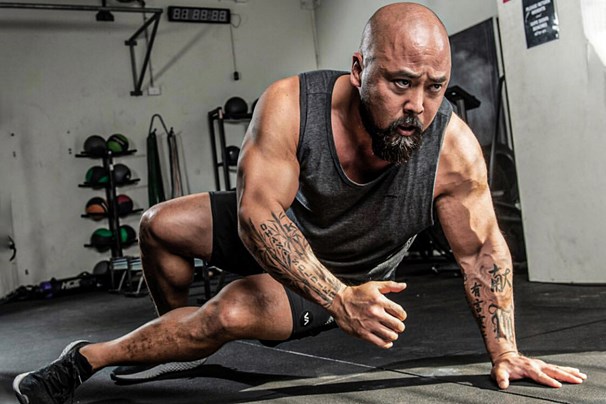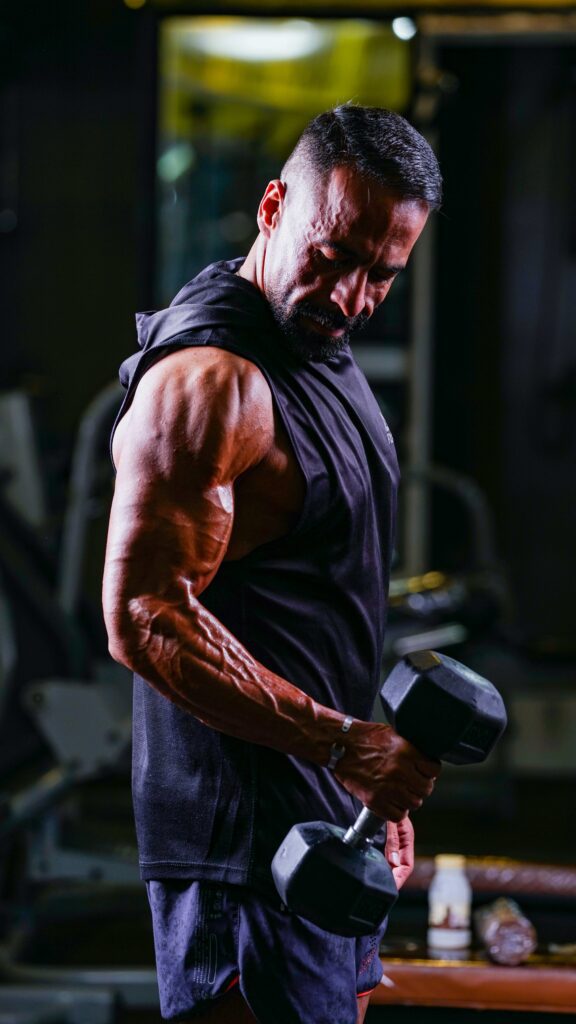THE BODY IS a complex machine. Your corporeal form houses over 600 muscles, all working together to help you perform your best every day. Fitness pros tend to organise all of these into different muscle groups—think upper body, lower body, core, and legs. If you’re training to improve your physique, it may feel impossible to understand how to approach training all of those groups in your workout plan. That’s why veteran gym goers incorporate something called a training split to address all these muscle groups best and strategies that you should address in your individual workouts.
“Instead of training everything on one day, we are splitting up what we train onto different days,” Ebenezer Samuel, C.S.C.S., MH fitness director, says. “This lets us focus on different muscle groups in each workout, and that can help us increase the intensity in which we train each muscle group.”
The intensity at which we exercise is the ultimate factor in determining our muscle growth and strength gains. You need to challenge your muscle groups, then allow them the proper time to recover so that you’re prepared for the next workout. Finding the right training split for you will facilitate just that.
What muscle groups should you be training?
One way Samuel likes to think about organising the muscle groups of the body is by dividing them into two groups: The main muscles and accessory muscles.
Major muscle groups
Your main muscles are the large driving forces in many lifts.
Chest
Back
- Includes the lats and rhomboids
Legs
- Includes the glutes, hamstrings, and quads
Secondary/Accessory muscle groups
These support all the movements powered by our main muscles.
Shoulders
Triceps
Biceps
Core muscles
Minor muscle groups
These muscle groups are almost always active in strength-building workouts.
Forearms
Calves
Traps
“Your first obligation in your training is to always train those larger major muscle groups,” Samuel says. “In part because if we do that well, we will tangentially train our secondary muscle groups and our minor muscle groups.”
What muscle groups should I work out together?
There are a few different styles of training that group certain muscle groups together, depending on training intensity and frequency.
The full-body training split
You’ll be working just about every muscle in your body every time you train using this method. Do this by focusing almost solely on those major muscle groups. You’ll incorporate at least one of each of the following exercises to hit all of those muscle groups:
- A row variation, like the dumbbell row, to work the back
- A horizontal press, like the chest press, to work the chest
- A lower body exercise, like a goblet squat, to work the legs
Why the full-body split works
The biggest pro of this split is its simplicity, making it a great option for beginners. It’s also very time efficient, as it works only on the most critical movement patterns. So, if you’re only able to hit the gym once or twice a week, this is a great routine for you.
Downsides of the full-body split
This approach requires a ton of energy, since it’s focusing solely on those larger muscle groups. If you’re really challenging yourself, you’ll get fatigued pretty quickly. That may mean you can’t push your heaviest weights for exercises later in the workout—which isn’t ideal for strength and muscle gains. And, since you’re working out your entire body, you’ll need substantial time to rest and recover—at least a day or two in between each workout. That’s great if you only have time to train two or three days a week, but not so ideal if you want more frequency than that.
The Upper/Lower training split
You’ll alternate focusing on the upper body muscles and the lower body muscles in this split. Since you’re no longer training the entire body, you’ll have the time and energy to include a few more accessory motions. It’s an especially great split if you’re aiming to hit the gym four times per week. Each day should incorporate a variety of exercises, like the ones below.
Lower
- A hip dominant exercise, like a barbell deadlift, to work the glutes and hamstrings
- A knee dominant exercise, like a goblet squat, to work the glutes and quads
- A leg isolation exercise that targets a muscle group you want to target, like leg extensions for the quads or hip thrusters for your glutes
- A unilateral exercise, like walking lunges
Upper
- A row exercise, like a cable row, to work the back
- A press exercises, like an incline press, to work the chest
- An arm superset, with exercises like tricep press down and biceps curls, to hit the accessory muscles
Why the Upper/Lower split works
You’re able to hit major muscle groups more completely by splitting the body in half. Since we’re able to add in a few accessory motions, we can start training in several different planes of motion, too. This split is well suited for recovery, since your upper body rests while you’re working the lower body, and vice versa. That allows you to increase your frequency of training.
Downsides of the Upper/Lower split
You’re still working quite a few major muscle groups in a single workout, which can be fatiguing for the accessory movements added onto the end.
The Push/Pull/Legs split
If you want to get more nuanced, the push/pull/legs split will really allow you to work every muscle group from all angles. If you’re a gym-goer who prefers frequency, this routine pushes every muscle group. One day will work your upper body muscles that you use to pull things towards you, so your back and biceps. The next will be dedicated to your upper body pushing muscles, like your chest and triceps. And the third day will be dedicated strictly to legs. Your exercise routine will look something like this:
Pull day
- A horizontal pull exercise, like a row
- A vertical pull exercise, like a lat pulldown
- A bicep exercise, like a hammer curl
Push day
- A horizontal push exercise, like a bench press or push up
- A vertical push exercise, like an overhead press
- A tricep exercise, like a skull crusher
Leg day
- A hip-dominant exercise, like a barbell deadlift, to work the glutes and hamstrings
- A knee-dominant exercise, like a goblet squat, to work the glutes and quads
- A leg isolation exercise that targets a muscle group you want to target, like leg extensions for the quads or hip thrusters for your glutes
- A unilateral exercise, like walking lunges
Why the Push/Pull/Legs split works
This split allows you more time with each muscle group, and allows you to go hard on accessory motions.
Downsides of Push/Pull/Legs
You do need to be able to hit the gym five to six times per week in order to work this split properly.
The “Bro” split
The most controversial of the bunch, the “Bro” split has you in the gym five days a week, each day focusing on one muscle group. Usually, the five days include one day of chest, one of back, one of arms, one of legs, and one of shoulders. You’ll hammer these muscle groups, and get practically a full week to rest and recover before seeing that muscle group again.
This split is reserved mainly for one population: bodybuilders. In general, your muscles can recover faster than a week. “Only the bodybuilding crowd pushes hard enough to need a full week of recovery between sessions,” Samuel says. “So, this one likely isn’t for you, unless you’re ready to fully commit to crushing your muscles.”
Which training split is best for you?
When you’re choosing which split commit to so you can address all of your muscle groups, don’t overthink it. All these splits have been proven to be effective for different goals. Consider how many days a week you’re willing to work out, and how hard you want to push each muscle group. If you can only commit to two days a week, you’ll pretty much have to go with a Full-Body split. If you can hit the gym three or more days a week, then most splits can work.
If you really want to spark growth, the Push/Pull/Legs or the “Bro” split are your best bet. If you’re not yet ready for that level or commitment, Upper/Lower or Full-Body will still allow you to train hard.
Regardless of which you choose, just remember that the overall goal is to keep your whole body active. “You’ll still be hitting every single muscle group on some level,” Samuel says. “And really, that’s all you need to gradually build the strength and muscle you truly want.”
This story was originally seen on Men’s Health U.S
Related Articles
















